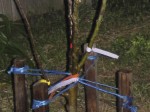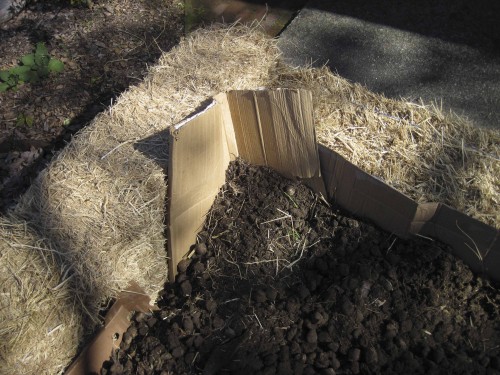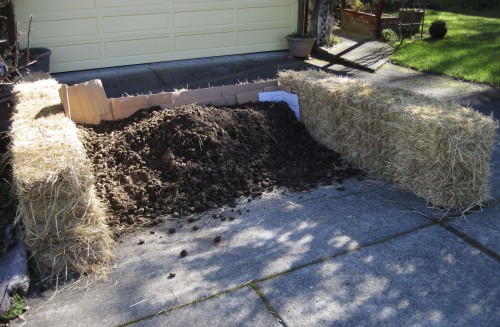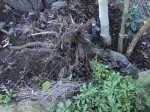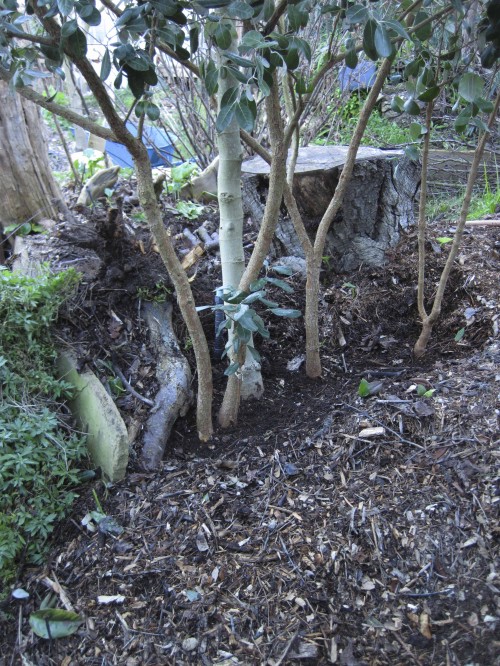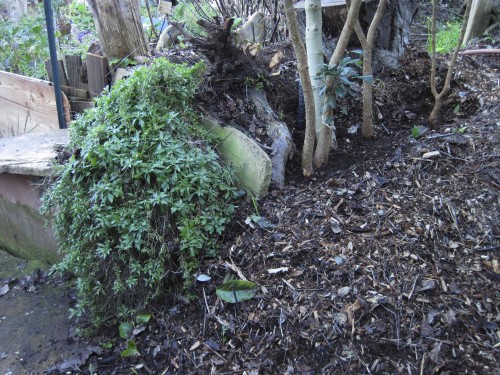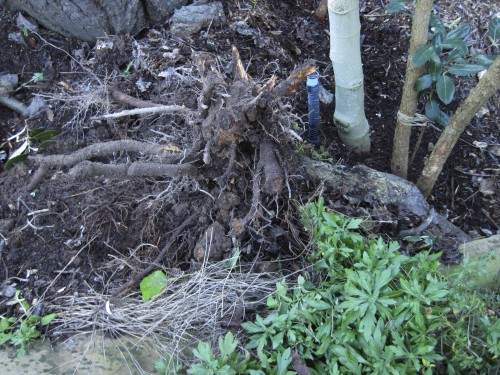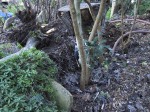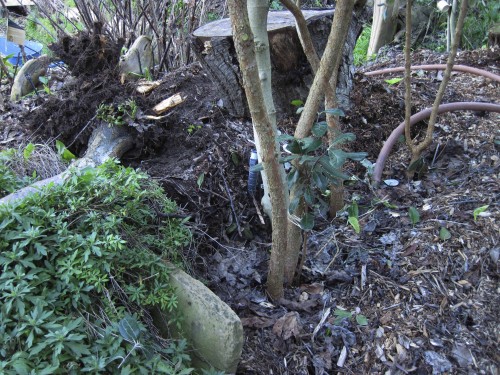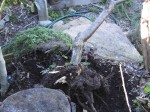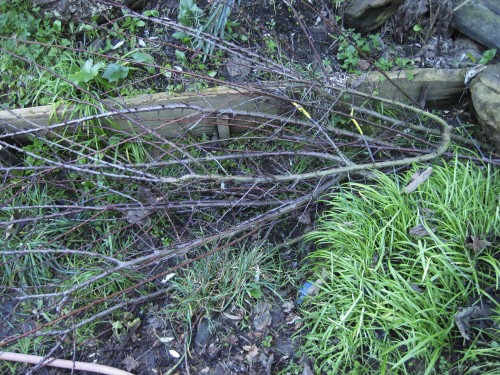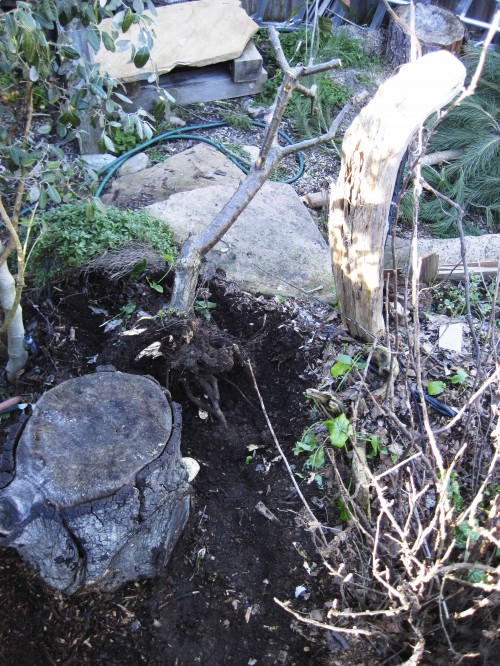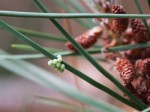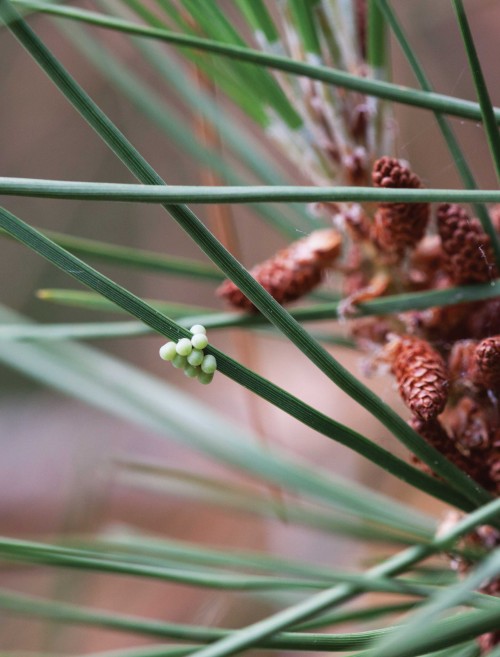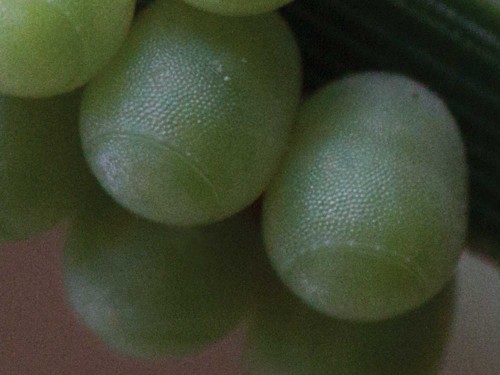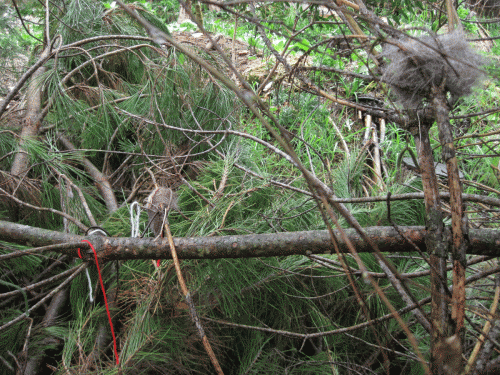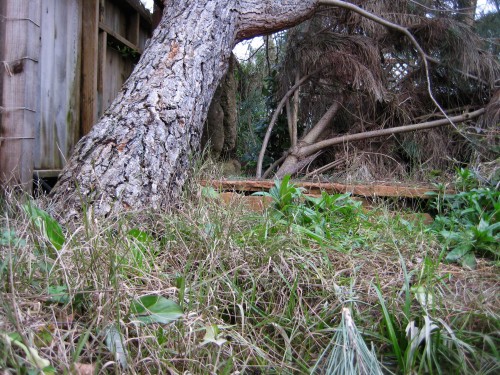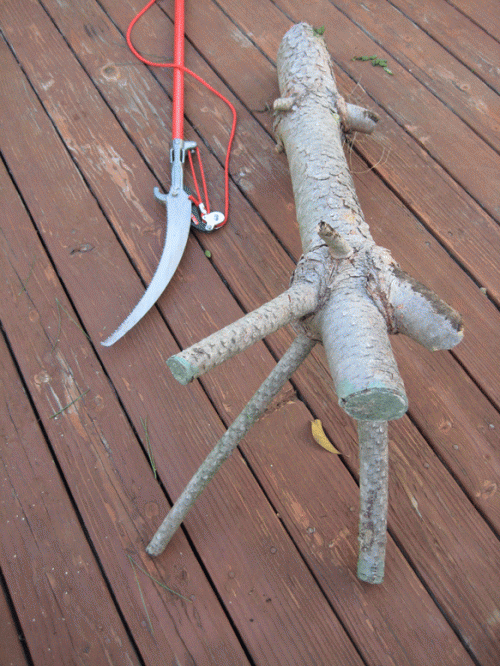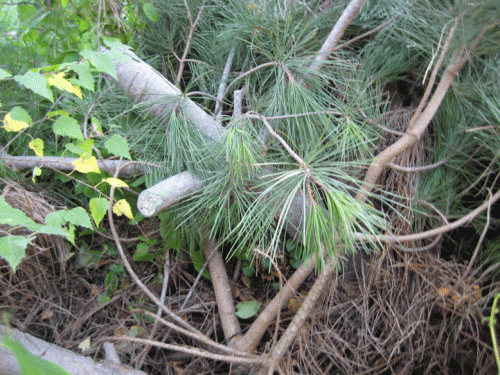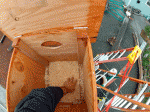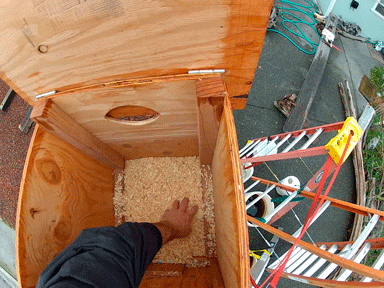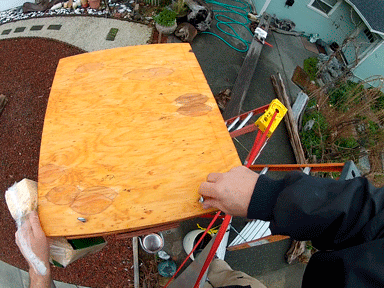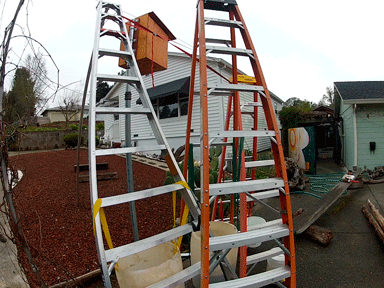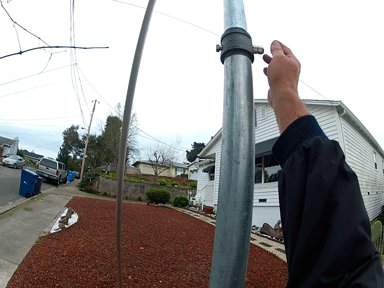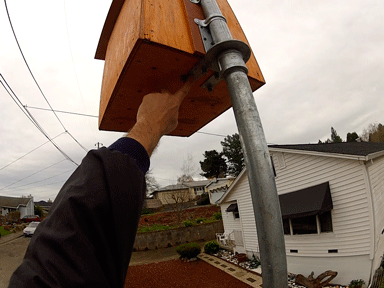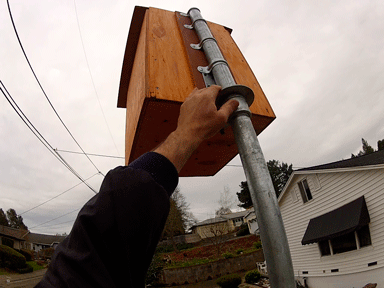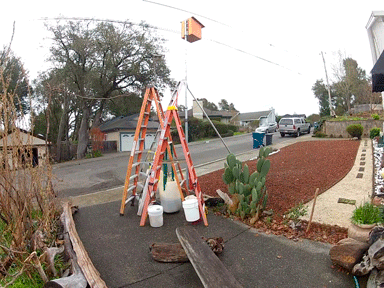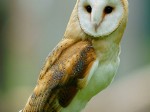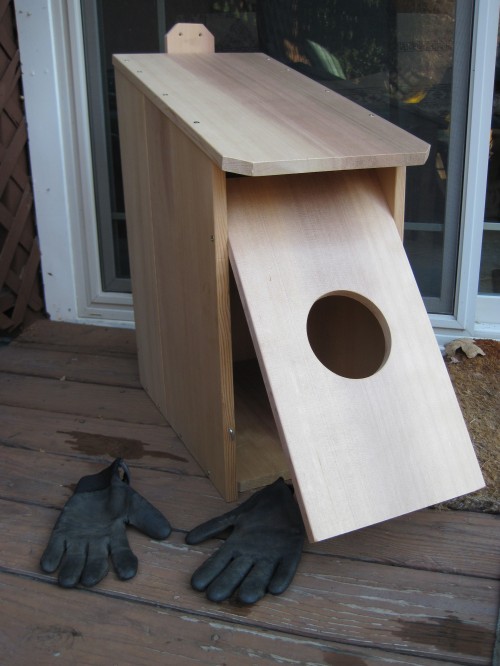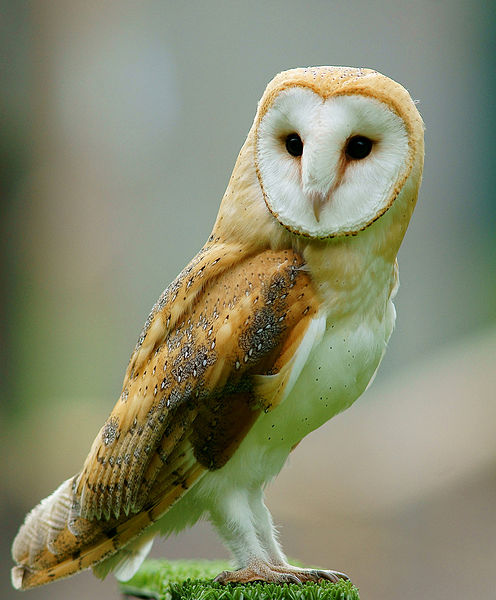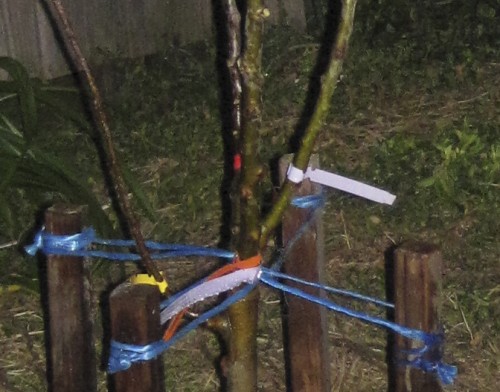 Multi-graft apple tree. Note the 5 different tags on the tree: 1) Multi-Graft, with code for root stock; 2) Gravenstein Apple, 3) Red Delicious Apple, 4) Yellow Delicious Apple, 5) Granny Smith Apple. Keeping the tags on, at least till the fruit is well identified, helps to sort out which apples are which.
Multi-graft apple tree. Note the 5 different tags on the tree: 1) Multi-Graft, with code for root stock; 2) Gravenstein Apple, 3) Red Delicious Apple, 4) Yellow Delicious Apple, 5) Granny Smith Apple. Keeping the tags on, at least till the fruit is well identified, helps to sort out which apples are which.
Today was a beautiful day in sunny California, with a warm afternoon reaching 65 degrees. Good napping in the car at work weather. And, also good weather for planting bare root fruit trees before warmer weather stimulates the dormant trees.
Bare root trees are trees that have been pulled out of their growing soil/sand medium with most of their roots clean of soil, and no leaves or even buds. These trees look like not more than a few sticks off a main, thicker stick (the trunk) with a straggly mop of roots. Having planted a bare root tree previously to see it thrive and leaf out helps one to appreciate their dormant abundant life waiting for your garden.
My friend, Mark, recently lost his Papa. Mark’s Papa, Louis, died January 27th this year and Mark decided to remember him by planting a tree in his honor. I was lucky enough, and honored, to be part of Mark’s tribute to his Dad. So we planted a bare root multi-graft upright (not for espalier) apple tree in Mark’s back yard this afternoon.
Simple task to plant a bare root fruit tree. Dig a hole and put the tree in, right? Well almost. Our job today was not so simple. Luckily, it was also not so hard. In the end, Louis got just the right amount of work out of us, and Mark and I got to clean up and have sunset to ourselves.
The first challenge was to plant this apple tree so that its feet would not be wet, that is, so that it received good drainage and its roots were not sitting in water. The planting spot just happens to be the lowest part of the back yard, to the side of a large water-run-off paver patio. Sitting water was under the plywood sheet we cleared out of the way to start the tree’s hole. The soil is the famous adobe clay of the area BUT I was pleasantly pleased that Mark had enriched it well over some years. The tree will be very happy in the spot Mark choose for it but let’s get it up out of the water!
Aha! Not only is the soil adobe heavy, there’s a plastic sheeting under this part of the yard. What a pain! What a blessing! Better to find a problem now (that can be fixed) than to have one later with no solution in sight. As we dug out the outer trench for the tree, we cut the plastic liner. Wala! (tried the old pull-out-the-tablecloth trick but it didn’t work) and a mess of soil later, and we could now plant the tree.
Four stakes were driven into the soil to center the tree. A Norwegian Tree Box1 was created to raise the soil level by placing thin scraps of wood, two parallel in one direction, then two on top and parallel in the other direction. The slat wood will hold up the soil till it settles, yet allow roots to escape, adventure, and fully support the tree.
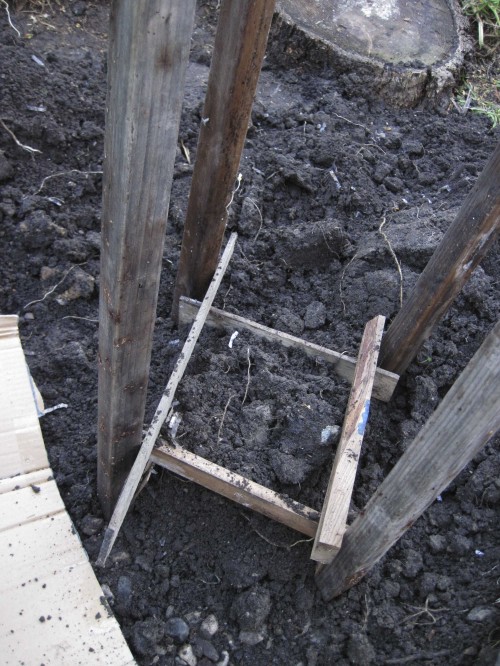 Slat wood used to raise the soil level. A little help, buying time, till the steeply mounded soil settles in place. The wood will quickly rot, returning to the Earth wence it came.
Slat wood used to raise the soil level. A little help, buying time, till the steeply mounded soil settles in place. The wood will quickly rot, returning to the Earth wence it came.
A root-spreading rock was placed on top of the soil mound and the tree’s roots were spread over the rock. The roots were then covered with soil and mounded to the correct crown/trunk level. Mulch was spread to enrich the soil, retain moisture, provide microbe and critter habitat, and to protect the new soil mound from the coming rains. The tree is planted!
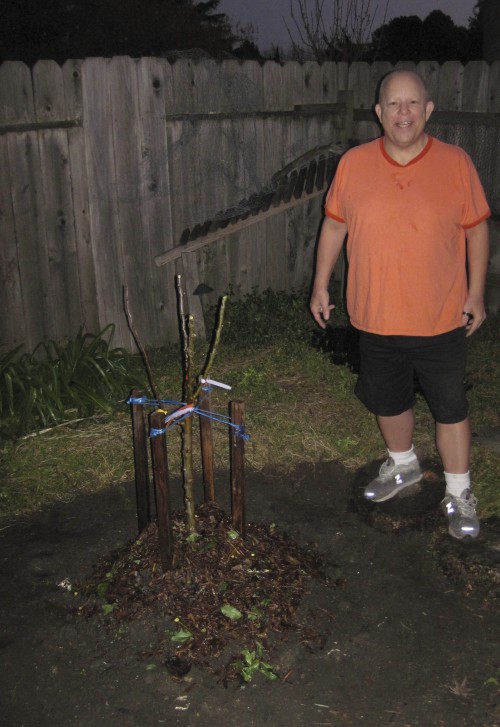 Mark proudly stands by the multi-graft apple tree, his tribute to his Papa. “Look Dad, there will be blossoms on your birthday!”
Mark proudly stands by the multi-graft apple tree, his tribute to his Papa. “Look Dad, there will be blossoms on your birthday!”
A few instructions to Mark, one of which is to bulk up the mound a little; the height is good but the roots could use a little more soil to expand into. On top of that “more soil”, some wood chips to mulch around the tree and to encourage mycorrhizal root growth. And beyond the mound perimeter, maintain a watering trench which can also be filled with mulching material. Especially for the dry months, no sense in having precious water pour off the mound and away from the tree. Permaculture’s water mantra: Slow it, Spread it, Sink it!
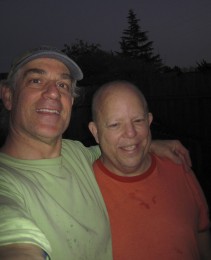
Take care, Louis. Glad I was there.
Tony
1 There is no such thing as a Norwegian Tree Box, but I thought it sounded very woodsman-like at the time.
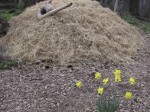
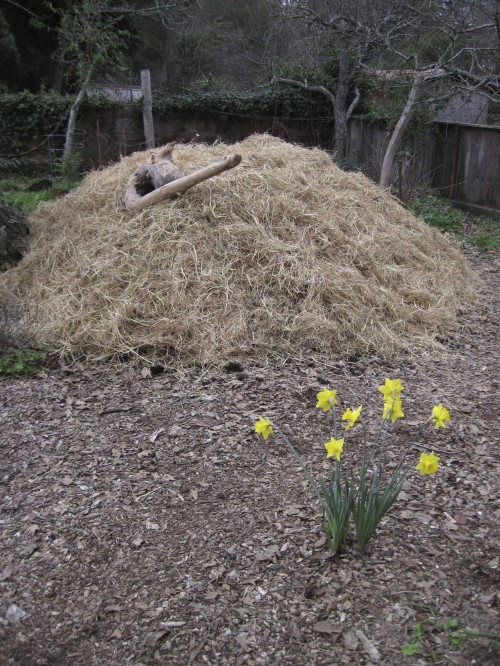 Food Ridge West before final layer of garden mix. The shredded rice straw bale is used to reduce the soil’s erosion from the coming rains. The final layer, of organic garden mix, will be added in a couple of weeks and by then the compost/manure under-layer will have settled some.
Food Ridge West before final layer of garden mix. The shredded rice straw bale is used to reduce the soil’s erosion from the coming rains. The final layer, of organic garden mix, will be added in a couple of weeks and by then the compost/manure under-layer will have settled some.
